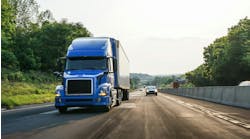How to leverage the Best Fleets program to build a winning workplace culture
We have seen many different and unexpected things over the last 16 years of evaluating and recognizing the best workplaces in the trucking industry. One, in particular, is the subculture of people who use the Best Fleets to Drive For program as part of their “professional toolbox.”
Having a “toolbox” gives you a road map to face new challenges. It’s accomplished by having a combination of processes, systems, applications, and connections that have proven successful in the past. Maybe it’s a custom set of Excel macros that present data in particular ways, a set of go-to vendors that you work well with, or a well-defined process for breaking down problems and prioritizing solutions. It’s different for everyone, but we all have a bag of tricks that we start with when going into a new job or facing a new challenge in a current position. For some people, that includes leveraging the Best Fleets program to define a road map for culture improvement in a fleet.
We first noticed this starting to happen years ago, when saw new companies enter the program and discover familiar names associated with them. Those people were changing jobs and getting the new companies involved in the Best Fleets program. In the past few years, we’ve noticed an increasing number of them, and they’re starting to have some real success.
What’s interesting about this is that they typically employ very similar tactics they used before to bring success to the new company, and those tactics can be easily adopted by anyone.
It takes a champion to win
First, it’s important to note that success in the Best Fleets program doesn’t come easily. Fleets must have a range of innovative programs for their drivers, a plurality of happy drivers confirming that those are the right programs for the company and good results in safety and retention. Building a company that can deliver these results requires a team effort. It also requires someone championing the cause internally. While the entire organization needs to contribute to be successful, we’ve seen time and again that there needs to be someone spearheading the efforts.
Leading the effort internally means coordinating all the data collection that’s required for the Best Fleets process. But it also means clarifying exactly what’s happening in every part of the business, evaluating the final scores, identifying the best opportunities for improvement, and measuring the results. (This is a skill set of its own, combining project management, negotiation, communication, coordination, and opportunity prioritization.)
Beyond that, there are some specific things that the “traveling Best Fleets experts” seem to always do as part of their approach when moving into a new company. Here they are:
1. Start with the big picture
The first step in the process always involves downloading a copy of the Best Fleets current results book. It includes all the questions that were scored, the point values for each different level of response, scores for the winning fleets, notes on category-specific observations, and a summary of broader trends observed during the year. It’s a great way to get a sense of where the industry is and see what winning fleets are doing.
From there, the experts review those questions internally and answer them honestly for the fleet. How would they score in each different area? Where are the biggest gaps?
2. Get specific
Next, they drill down and look at specific fleets—those closest in size, market segment, or operating area. This makes it easier for them to focus on answers directly relevant to their current company. If those winners participated in a podcast or webinar where they’ve discussed their programs, those episodes or associated stories are listened to or read. They’re full of insights and examples.
It’s worth noting here that no two fleets will ever solve a problem the same way. We’ve seen that the experts recognize that and know that they’ll need to customize a solution for their current company. Hearing a fleet talk about how they solved a problem won’t provide a repeatable recipe for solving that same issue elsewhere, but it does provide ideas on how to approach a solution, which can be just as valuable.
See also: Best Fleets to Drive For nominations open
3. Get social
Watching what winning fleets do in real time is also valuable, and social media is a great tool for that. Follow the winning fleets on social media to see what they talk about, how they work together, and what their broader community of drivers is saying.
4. Get involved
When the time comes, the experts always go through the Best Fleets program, whether or not there’s a chance of making it to the Top 20. The process itself is valuable as a culture-building tool and sets the stage for further improvement.
Finally, talk to the winning fleets directly. The Best Fleets Education & Awards Conference includes a deeper dive into the trends and proven successes through the formal education sessions as well as ample opportunity to talk directly to the winners about how they’re solving specific problems. Throughout the year, there are other industry events where fleets have a chance to connect, and the experts take advantage of those to collect as many insights as they can from their peers.
Put it all together, and you can see that there’s a repeatable, transferrable process for establishing a fleet benchmark. This allows you to identify the gaps you might have within your company and, most importantly, how to close them. It may not get you into the Top 20 immediately, but it delivers results and moves you further in the right direction.




